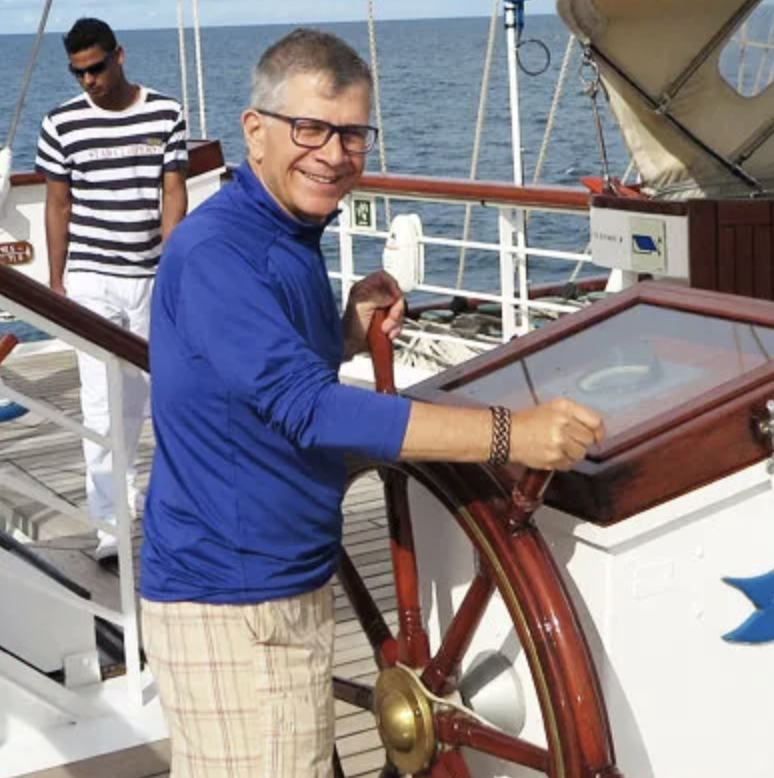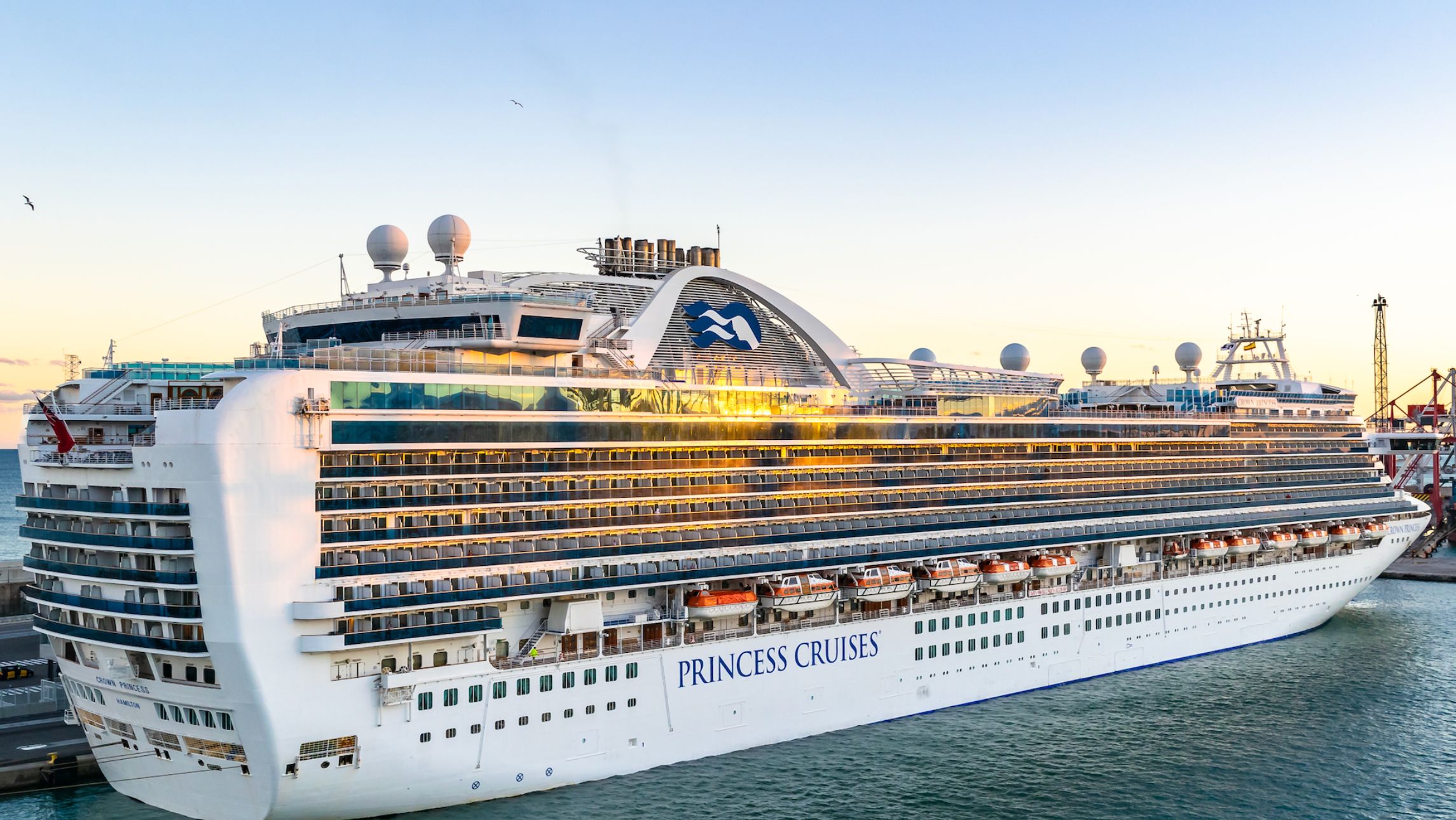Cruise Passenger analysis
There are hundreds of passengers milling around at Circular Quay. They are waiting for cabs, buses or relatives. It’s a familiar early morning sight when cruise ships arrive in Sydney.
In this case, however, it’s the moment when history could have been changed for the better.
These passengers are clutching leaflets that told them that, when they got home, they should self-isolate. For some, that meant a journey across the globe to America – potentially unwittingly infecting scores of people along the way – before they quarantined.
By any stretch of the imagination, a bizarre interpretation of what the purpose of isolation is about.
This is the morning of March 19th – the now notorious day the Ruby Princess docked and set off a chain reaction that would see 28 people die and hundreds infected with coronavirus.
Yet none of those confused passengers, relieved to be home after their cruise was cut short by sickness in those early days of the pandemic, had any idea of what was about to unfold.
This weekend, many involved in that astonishing case will be reading the 315 pages of the Bret Walker SC inquiry report into how a cruise ship with almost 3,000 passengers was allowed to disgorge its human cargo at Circular Quay without waiting medical checks and the final results of tests on a number of passengers who displayed the symptoms of COVID-19.
It was at the start of the pandemic – everyone was aware of what was happening. With hindsight, it’s clear these passengers, many of whom would go on develop symptoms, should have been tested for the virus. But they weren’t.
Instead, they were taken off and handed a leaflet which wrongly advised they could continue their onward travel. While this advice from NSW Health was changed on March 21, it was by then too late.
Princess Cruises was so convinced the passengers would be tested, they had booked hotel rooms expecting they would need to be quarantined after disembarkation. Few were more surprised than Princess executives when this didn’t eventuate.
How could this happen? Well, that’s what Mr Walker’s report is all about.
The Sydney Morning Herald said the report contained “sweeping criticism”, and the ABC described it as “blistering”.
And it certainly won’t make great bedtime reading for Premier Gladys Berejiklian, Health Minister Brad Hazzard or the head of Australian Border Force, Michael Outram.
But it will make the bedside table of Princess Cruises president Jan Swartz. Within a few hours of its release, Princess Cruises issued a statement from Ms Swartz saying her staff had been exonerated.
“Princess Cruises welcomes the completion of the independent Special Commission of Inquiry into Ruby Princess and again expresses profound sorrow at the impact COVID-19 has had on Ruby Princess’s guests, crew and their families. Our hearts go out to everyone who has been affected, particularly those who lost loved ones” said Ms Swartz.
“The Commission’s report confirms that none of our people — the Captain, the ship’s doctor, or members of our shore side port agency team — misled public authorities involved in Ruby Princess being permitted to disembark guests on March 19.
“This finding is of great importance to us because it goes to the integrity of our people. In our more than 20 years in Australia, we have always sought to cooperate honestly and professionally with officials in accordance with the regulatory environment”.
Her remarks will be echoed by the rest of the industry. There was concern that this investigation would blame cruise ships for the cluster that spread across Australia. This report will be a relief.
There is still a police homicide investigation to worry about. But hard to see where that goes, now that Mr Walker has cleared most of the players of blame.
In the weeks that followed this and the Diamond Princes case, there were many headlines and sensationalised TV reports that heaped blame on the cruise industry for the number of cases on board ships.
Those reports were unfair, slanted and biased. In truth, coronavirus was not invented by the cruise industry. It was a victim, like so many other businesses, of a sudden and extraordinary change in global infection.
And, like so many in tourism, it is now suffering the enormous consequences in huge job losses and enormous cost to shoreside communities across the globe.
So who was responsible for one of the biggest scandals of the pandemic? Mr Walker actually doesn’t make that clear.
He is certainly scathing about NSW Health. But he was also conciliatory.
“The human consequences of the scattering upon disembarkation have not yet played out. That is the salient feature of an uneliminated infectious pandemic.
“Its facts and figures simply cannot convey the burden of pain, suffering and grief that COVID-19 has wrought on the Ruby Princess travellers. Those paramount matters were touched on in the evidence given by a selected sample of passengers.
“The Commission is indebted to these witnesses, whose affecting and dignified words are most eloquent. Inadequately, the staff of the Commission and I here record our deepest sympathies to the bereaved and the sick, and the disabled, who have suffered as a result of the Ruby Princess outbreak of COVID-19.
“Here, it must be understood that the shortcomings in the public health response that are found in detail in the body of the Report are by no means to be regarded straightforwardly as causes of the suffering that has followed.”
And later, he says: “The proper approach to the COVID-19 threat posed by the Ruby Princess’s nearing the Heads on 18 March 2020 called for the travellers on board to be regarded, in the absence of test results being known, as presenting a real possibility – not remote, not fanciful – that they included one or more infected people who could transmit the virus and perhaps spark an outbreak of infection, if no steps were taken to prevent or limit that outcome.”
“Wisely, the public health authorities had already decided that everyone on board a cruise ship should be regarded as a “close contact” of any COVID-19 cases on board…it followed that discovering whether the critical link existed had to precede any scattering upon disembarkation. It thus followed that awaiting test results was rudimentary and very important.”
During the inquiry, Mr Walker was criticised by Prime Minster Scott Morrison for reducing NSW Health official Kerry-Anne Ressler to tears. Mr Walker, in his report, mentions her again.
“On the whole, the State public health officials did adequately attempt to protect the public health against COVID-19 on cruise ships, by reference in particular to the need to check for human error.
“However, and it is a big however, their attempts sadly miscarried in this event. Had Ms Ressler not failed to update the epidemiological criterion (ie overseas connexions of travellers on board), it might be thought, at first sight, that a different assessment must have been made by the Expert Panel which actually assessed the Ruby Princess as “low risk”.
“As the detail in the body of the Report tries to explain, however, this would not be a fair or complete view. The fact is that the Expert Panel knew, as well as Ms Ressler as a senior epidemiologist knew, that during the voyage the class of possibly suspect cases of COVID-19 had substantially expanded by inclusion of the criterion of any recent presence overseas (such as arrival from the USA for the cruise).
“Members of the Expert Panel, not only Ms Ressler, failed to realise and act on this information. Combined, it was a serious mistake that contributed to the relatively unrestrained scattering of passengers on 19 March 2020.”
And he continues: “Two other factors in relation to testing were also significant, if not so causally important. First, the avoidable delay in testing and notifying its results could have had real public health consequences – although the hypotheticals are quite beyond confident reconstruction. The sooner test results were appreciated, the sooner the scattering could be pursued and contact tracing (and associated further testing) carried out.
“Contacts multiply over time, if people are not completely isolated or quarantined (and then, sadly, subject to imperfect observance producing spread of infection, as in Melbourne recently).
“Second, the small number of swabs taken on board the Ruby Princess and available for testing early on 19 March represented a woeful shortcoming in the stipulated number.
“As the number of swabs reduces, so does the possibility increase that as a sample it will miss any COVID-19 cases: that is not difficult reasoning, and presumably informed the prior explicit requirement that a COVID-19 swab be taken from every respiratory-symptomatic traveller using the ship’s medical facilities during the cruise.
“In a sense, it was lucky that the too small sample available on 19 March did produce positive results that could produce a belated public health response.
“The reasons for the shortage of swabs are examined in the body of the Report. No doubt supply chains were stretched as the pandemic flourished.
“But it cannot constitute prudent public health administration to have tolerated a profitable leisure business like Carnival knowingly taking the risk of insufficient swabs to comply with pre-existing requirements.”
And his conclusions about NSW Health are a long way from the scathing headlines.
“These imperfections in the State’s public health work on 18-19 March 2020 in relation to the Ruby Princess should not be taken as damning condemnation of the individual public servants involved. The lapses identified are not in some way typical or characteristic of them or their colleagues. Some of these estimable individuals, as the evidence showed, remain in charge of weighty aspects of the State’s frontline response to the pandemic.
“I have to say that my confidence in their good faith and skilled diligence in these continuing efforts was not dented by the criticism I have expressed about the Ruby Princess episode. Everyone makes mistakes, and when we judge one another we should bear that in mind.”
Where the commissioner was scathing was towards Commonwealth co-operation.
“The one fly in the ointment so far as assistance to this Commission goes, is the stance of the Commonwealth…a Summons to a Commonwealth officer to attend and give evidence about the grant of pratique for the Ruby Princess was met with steps towards proceedings in the High Court of Australia. Quite how this met the Prime Minister’s early assurance of full co-operation with the Commission escapes me.”
This is believed to be a reference to an Australian Border Force officer who was on the gangplank of the vessel when she arrived at Circular Quay.
The key findings and recommendations:
- On 10 March 2020, the CDNA amended its Guidelines, such that all persons on board the Ruby Princess with an ARI or ILI became suspect cases for COVID-19: meaning they should all have been tested for the disease. The Expert Panel did not have this suspect case definition in mind when they conducted their risk assessment on 18 March. This was a serious and material error.
- The Expert Panel was not helped by the drafting of the risk assessment form, which was not updated with the new “suspect case” definition. This too was a serious error.
- The risk assessment form should have been drafted so as to clarify for the Expert Panel whether persons on this ship who had symptoms of respiratory illness were told in advance of assessment at the onboard medical centre that the consultation would be free of charge.
- The ARD Log should have been read by all members of the Expert Panel. They should have noticed the “significant spike” in ARI/ILI rates on the ship, particularly on 17 March. They should have requested an updated log either late on 18 March, or early on 19 March. These are all serious errors.
- A graded risk assessment approach may at times provide a useful framework for public health risk assessments. It did not here, either before 10 March, or after. It was a distraction from the real questions: what are the consequences of the risk eventuating, and what are the appropriate precautions to take in light of such consequences?
- An ILI rate of 1% or more had some utility for the assessment of whether COVID-19 was circulating on the Ruby Princess during the 8 March voyage. That utility was limited. The more important question was: are there suspect cases of COVID-19 on board the ship?
- NSW Health should have ensured that cruise ships were aware of the change to the definition of a “suspect case” for COVID-19 made on 10 March. This would have resulted in the identification of such cases on the Ruby Princess. 101 persons fell within the suspect case definition by 18 March, and 120 by the time the ship docked. NSW Health should also have ensured that such persons were isolated in cabins. These were serious mistakes by NSW Health.
- The failure to ensure that swabs were collected by an onboard health assessment team in accordance with the requirements of the 9 March Enhanced Procedure was a serious failure by NSW Health.
- The delay in obtaining test results for the swabs taken from the Ruby Princess on the morning of 19 March is inexcusable. Those swabs should have been tested immediately.
- In light of all the information the Expert Panel had, the decision to assess the risk as “low risk” – meaning, in effect, “do nothing” – is as inexplicable as it is unjustifiable. It was a serious mistake.
- In relation to the insufficient supply of swabs available to the medical staff on the 8 March voyage of the Ruby Princess, no criticism is made of Dr von Waztdorf (the ship’s chief doctor).
- Dr von Watzdorf gave a truthful answer to the question on the pre-arrival risk assessment form as to whether health assessments in relation to respiratory illness were provided free of charge.
- No criticism is made of Mr Little (Princess Cruises executive) for not informing NSW Health of the “significant spike” in ARI/ILI numbers that he perceived on the Ruby Princess as at 17 March because that information was provided to NSW Health in the ARD Log on 18 March.13 2.14 Dr von Watzdorf ought to have notified NSW Health of the additional passengers and crew diagnosed with an ARI or an ILI on 18 and 19 March 2020. However, this was an oversight by her, which did not amount to a failure to comply with policies and procedures in place at the time.
- Carnival should have ensured that Dr von Watzdorf was made aware of the change to the CDNA “suspect case” definition on 10 March 2020. They should also have ensured that passengers and crew aboard the Ruby Princess were informed that there were suspect cases of COVID-19 on board. Those persons meeting the definition of a suspect case should have been required to isolate in their cabins.
- Passengers were incorrectly advised by the ABF during the cruise that their 14-day period of self-isolation would commence from the date of departure from the last overseas port visited by the Ruby Princess, being Napier on 15 March. This inaccuracy was later clarified during disembarkation at the OPT on 19 March, when passengers were provided with a fact sheet published by the Commonwealth Department of Health which relevantly instructed them to self-isolate for 14 days from their arrival in Sydney.
- The directive to allow passengers to onward travel interstate and internationally after disembarkation on 19 March did not appropriately contemplate or comply with the terms of the Public Health Order that came into effect on 17 March, which required all cruise ship passengers entering the State from any other country to isolate themselves in suitable accommodation for 14 days. Under the terms of the Public Health Order, the State Government should have arranged suitable accommodation for all passengers who were not residents of the State.
- The fact sheet linked to an email sent to passengers at 10:46am on 20 March incorrectly advised that they were permitted to continue with onward travel, despite being identified as “close contacts” of a confirmed COVID-19 case. Although this advice was corrected by NSW Health by the evening of 21 March, it was at that stage too late to prevent a considerable number of interstate and international passengers from onward travelling, including some passengers who were symptomatic during transit.









